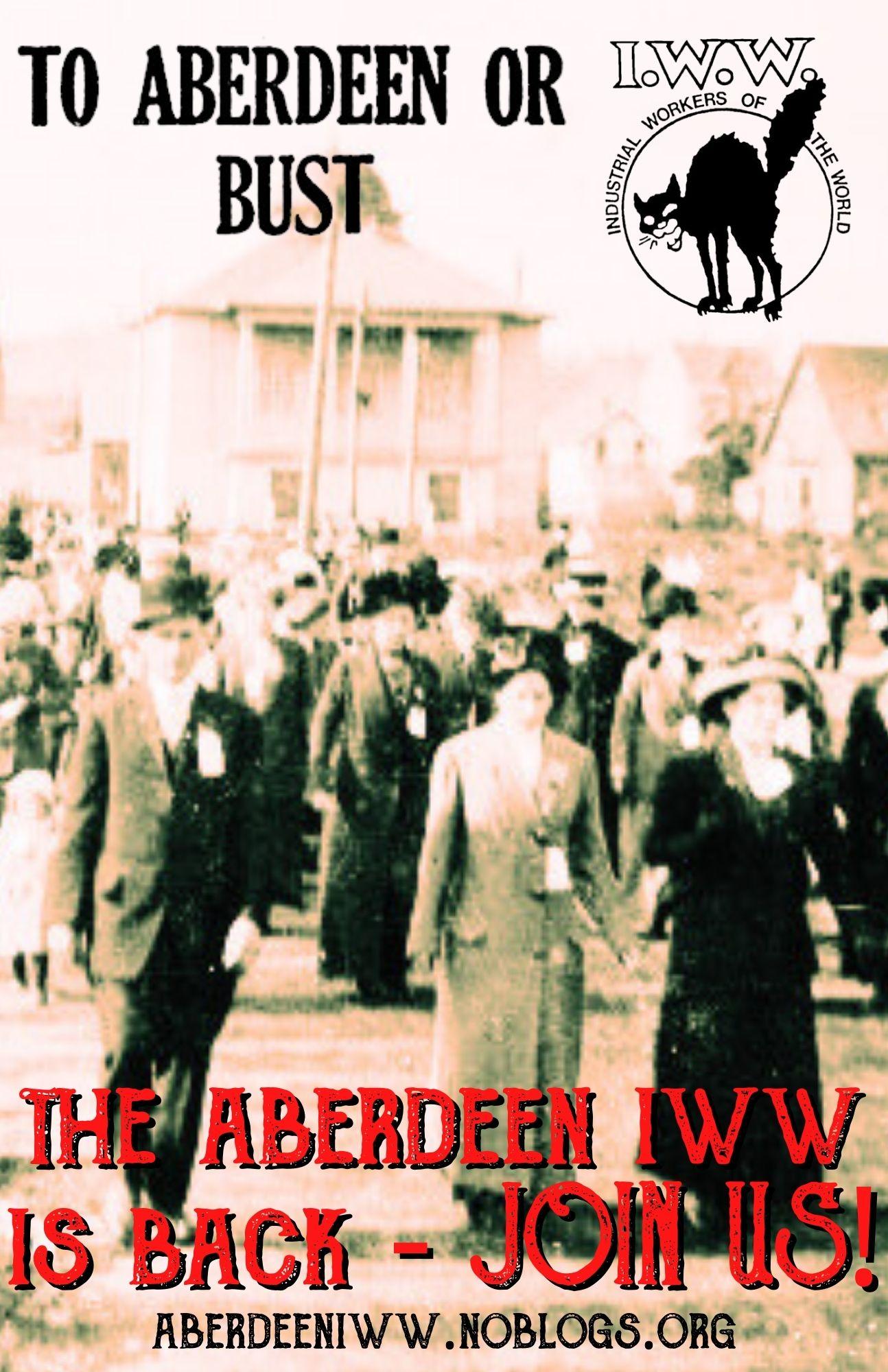
Red Harbor: The IWW in Grays Harbor, Washington
by Aaron Goings
Grays Harbor is as an inviting starting point for a history of Industrial Workers of the World (IWW or Wobblies) in the Pacific Northwest because any study of this region should place this militant revolutionary organization and the dramatic labor confrontations it waged at or near the center. This contention rests in part on the fact that in Grays Harbor literally thousands of workers joined or otherwise supported the IWW during the first four decades of the twentieth century.
The region also experienced a series of epic labor struggles, frequently led by the IWW. With some notable exceptions, Grays Harbor’s radicals hailed primarily from the lumber industry, working in this dirty, dangerous industry as loggers, lumber and shingle mill laborers, longshoremen, sailors, and logging camp waitresses. These men and women formed a diverse array of working-class organizations and political parties to fight their bosses, improve wages and working conditions, push government in more worker-friendly positions, and in some cases to overthrow the capitalist system.
Grays Harbor occupies the Southwest corner of Washington’s Olympic Peninsula. The Harbor towns, the term used for the region’s main urban centers of Aberdeen, Hoquiam, and Cosmopolis, were carved out of the forests and mud between the 1880s and 1910s, built alongside the numerous rivers that empty into the harbor. These abundant evergreen forests also provided the region with its main industries. Logging, lumber, shingles, and the shipping of wood products employed tens of thousands of workers during the early twentieth century. Local laborers produced and shipped lumber on an epic scale. Harbor mills regularly cut the most lumber of any place in the United States, while the region’s teamsters, longshoremen, and sailors were responsible for shipping record-breaking amount of lumber annually, earning the region its annual title as “Largest Lumber-Shipping Port in The World.” In 1924 Grays Harbor became the first port to ship out over a billion board feet of lumber by water, a feat that earned heavy praise of local boosters: “Grays Harbor would be the only lumber port in the world able to talk in billions while others were talking millions in the lumber game.”[1]
Thousands of men and women labored in Grays Harbor’s lumber industry during the early twentieth century, performing the work necessary to allow the region’s industry to reach such impressive heights. Early twentieth century lumber workers labored long hours in treacherous conditions for low wages. Until strikes led by the IWW forced Pacific Northwest lumber employers to grant the eight-hour day, lumber workers worked ten hours per day as a rule. During the first three decades of the twentieth century, loggers died at a much higher rate than any other job on the Pacific Coast. Lumber manufacturing was the second most dangerous occupation in the region, while shingle weavers regularly lost fingers, hands, and arms to the swirling saws. Most Pacific Northwest loggers spent their entire adult lives aware that they would meet their fate in the woods. Finnish-American logger Max Wilson recalled there being “49 different ways to get killed in the woods,” and during one year logging for the Aloha Corporation, he recalled, “they must have killed about five men.”
